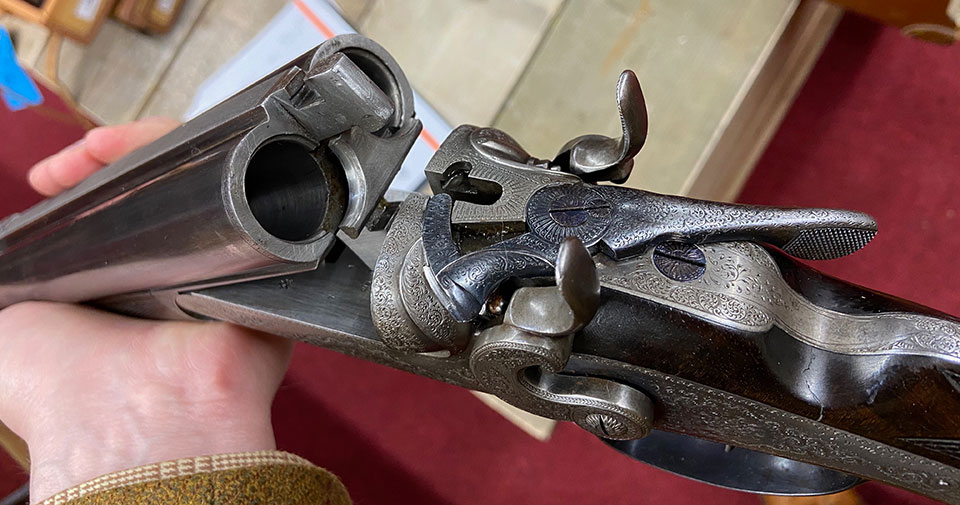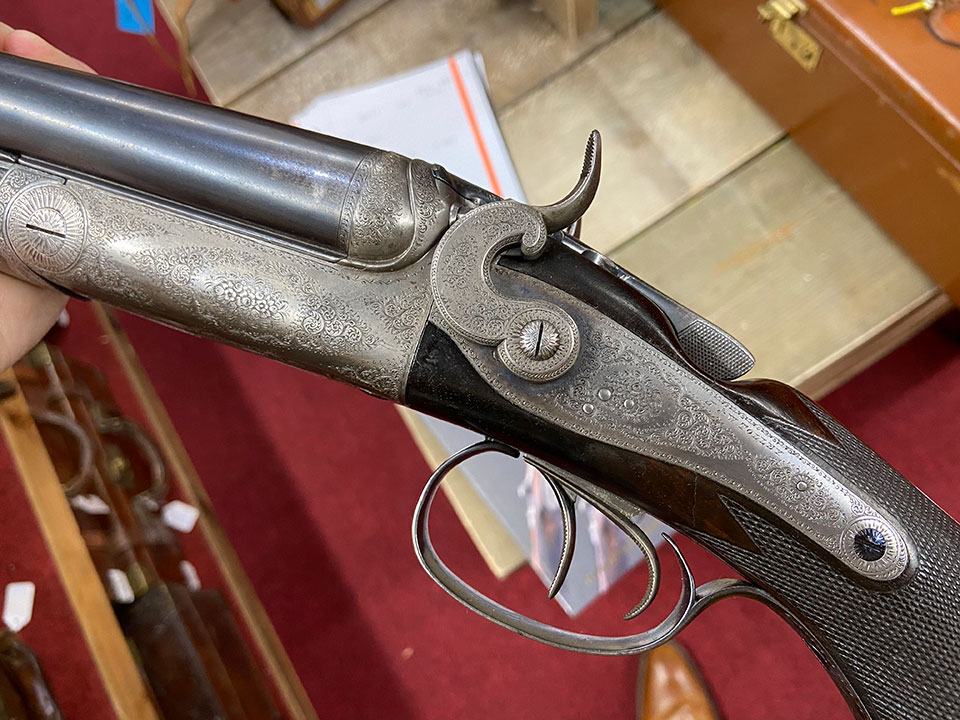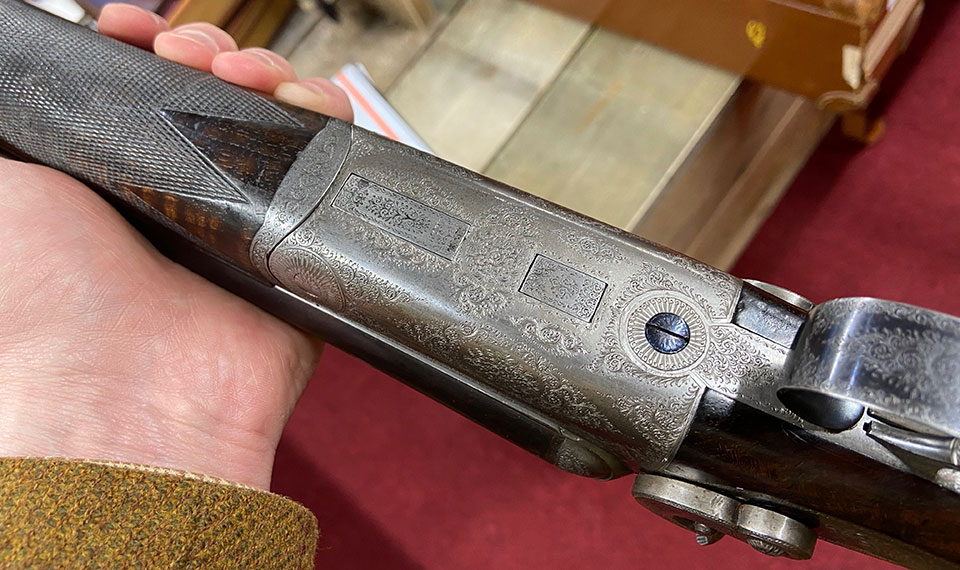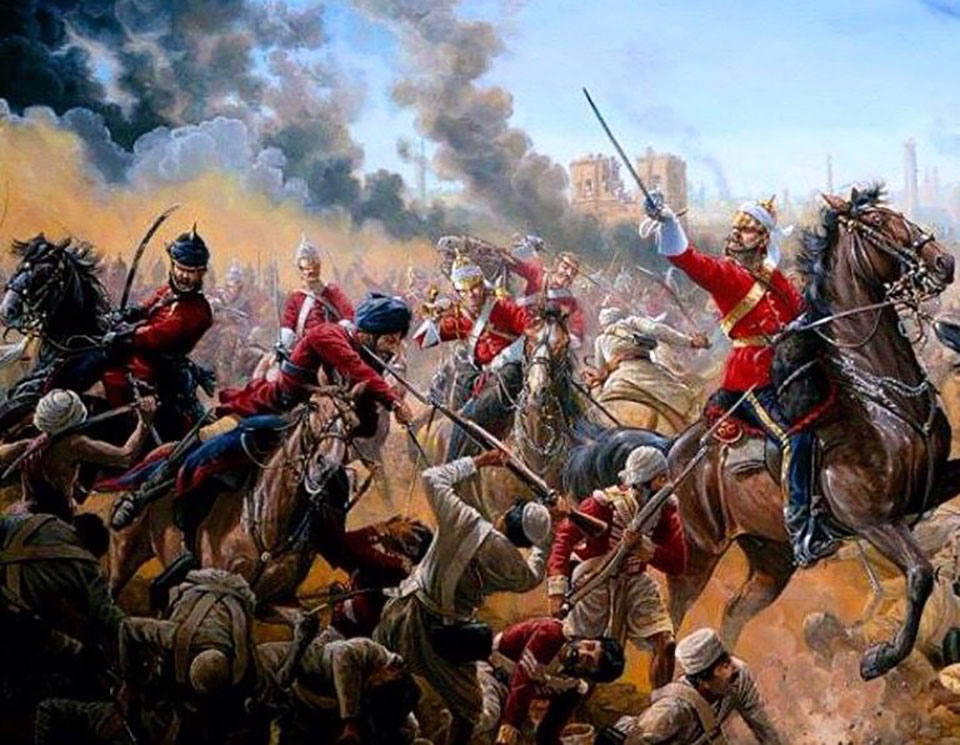Asking the uninitiated, during a first encounter with Tolley’s ‘Giant Grip’, might see them mis-date it by a decade. The overly complex shape, the convoluted mechanism and the overall geometry suggests the 1860s, when, in fact the patent was not granted until 1877.
Why is that significant? Well, let us, for a moment, consider what was available to the gunmaker in 1877 as a means by which he could construct a breech-loader.
The concept of holding the breech closed by means of a top-rib extension, with an inter-locking bolt, was already well established; twenty years established, in fact!

Westley Richards had been using their bolted doll’s head since 1858, first with a long turning lever. By 1862 this had become a sliding lever and by 1864 it was the sliding-bolt, doll’s head top-lever we still see used on the firm’s guns today. Even then, it was neater than the Giant Grip.
Early mechanisms often appear ungainly. Gunmakers were trying to provide security of lock-up between breech and barrels. In their quest for strength, beauty often suffered. One could say many of these solutions were over-engineered.
As time passed and gunmakers learned more about what was necessary, what was desirable and what was un-sellable, they refined their practices. As a result we see many patents fall into dis-use and others become massively successful and widely copied.
In 1877, Purdey’s double under-bolt was twenty-four years old. Scott’s spindle, which was used in conjunction with the Purdey bolt to make the familiar and universal top-lever, snap action gun was twenty two years old. If he had wanted to, Tolley could have built all his guns during this period on a system that you can see now on a new Holland & Holland or Purdey shotgun.
...it is not as uncommon as it should be.
So, what was he thinking devising such a weird-looking top-lever bolting system? It would be interesting as a curiosity if only one or two examples were made but Tolley seems to have made a lot of them. The Giant Grip may not be common, but it is not as uncommon as it should be.
Moreover, it was not confined to use in game-weight shotguns. It has passed through my hands in the form of twelve-bore, eight-bore and sixteen-bore shotguns. It has also been used in double rifles.

Last month, Holt’s sold a twelve-bore Tolley with a ‘Giant Grip. top-lever, but this one had the thumb tab on the end of the lever reversed. The gun gives every impression that it was made as a double rifle or (more probably) a shot-and-ball gun. The sights, marked for 100 yards, would not be much use on a dedicated bird gun. This impression is backed up by the weight, at 9lbs 13oz, eyes to carry a sling and the colonial career of the owner.
This particular Giant Grip was made for Lt. Col The Hon. James Hay Fraser, who joined the Bengal Staff Corps in 1852 and retired in 1880. Life in India would have provided ample opportunities to make use of a shot and ball gun, which could have taken on tiger, hog or duck, or whatever might present itself.
He was present in June 1857, when the Indian Mutiny ignited and was fortunate to survive...
Fraser’s life in India was an eventful one. He was present in June 1857, when the Indian Mutiny ignited and was fortunate to survive early events, when his sepoys rebelled and chased him and his commanding officer from the parade ground, merely jeering, rather than butchering them, as happened to other officers of his Bengal Infantry regiment, at Cawnpore.
Fraser was present at the siege of Lucknow and engaged in fierce fighting during several major battles during the mutiny, being wounded in at least one; the Battle of Nawabgunge. The Mutiny was a bloody one with atrocities committed by both sides.
Fraser must have bought the gun around the time of his retirement and promotion to full colonel. It could not have been made before 1877 and he died in 1886, in Somerset; just six years after bringing his military life to a close.
He was only fifty-six, but India could be tough on Europeans in the days before vaccinations and antibiotics. One could speculate that his service there may have hastened his demise, one way or another. Perhaps he wasn’t planning to retire when he bought the Tolley. It would seem an odd choice as a gun with which to retire to rural England.

The gun case bears the name ‘Lieut. Col. J. Fraser’, so pre-dates his retirement and promotion, in 1880. So, what was it that made Fraser choose a strange contraption like a Tolley Giant Grip when he could have had a conventional Anson & Deeley or a top-lever hammer rifle like an Alex Henry or a Purdey .500 BPE? The gun pre-dates the Holland & Holland ‘Paradox’.
Perhaps he enjoyed the oddity. We can observe today that although conventional guns are predictable in appearance and mechanics, there is still a market for the non-conformer. George Hoenig’s wonderfully eccentric double rifles serve as a good example. Purdey had to bring back hammer gun in the late 1990s, due to demand and Darne continued to sell guns long after the design looked decidedly odd and impractical.
So, perhaps Fraser simply saw the unusual gun/rifle and took a shine to it. I wonder if it was sold through one of those Indian emporiums of all things sporting, like Manton & Co. in Calcutta, where the wares of many European makers were offered to colonial servants, army officers and the local nobility.
...absence of the protrusion on the top lever provides for a lower face position...
The most striking feature of the gun/rifle is the reverse arrangement of the top-lever, requiring the stock to be cut-out to accommodate the tab as it moves from centre to side position. The absence of the protrusion on the top lever provides for a lower face position on the comb and an unimpeded view down the rib, and onto the sights. I wonder whose idea that was.
In all, this stop-gap, halfway-house between a heavy rifle and a shotgun asks more questions than it answers but it shines a light on a man and some events from a period in history when the British Empire was in full growth; tales of derring-do and images of swashbuckling soldiers, pioneers and explorers thrilled the imaginations of schoolboys dreaming of adventures to come.
How the world has changed immeasurably since but how lovely that encountering old sporting arms like this, decidedly odd, Tolley bring those, long forgotten, days and those men back into focus. Living history is what they are and that is why so many of us enjoy them still.

Published by Vintage Guns Ltd on




